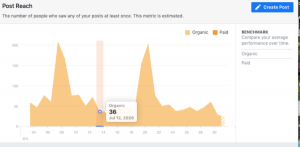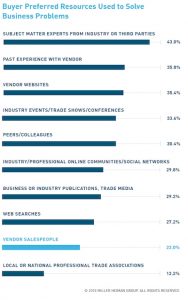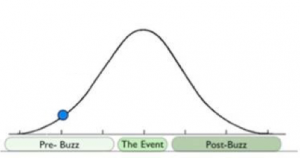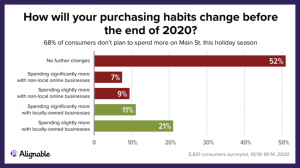Columnist Andrew Osmak discusses why phone numbers are gaining importance for marketers as a reliable identifier to gather data, track consumer behavior and attract leads.

Once considered on the decline, phone calls are now the gateway for tracking offline and online consumer behavior in unprecedented ways.
No longer reserved just for voice calls, the phone has become much smarter now with apps, access to the internet, texting, cameras and navigation. What used to take a variety of tools is now aggregated in one place.
The vast majority of people have access to a smartphone — with nearly 80 percent penetration in the US market — and they’re carrying it with them all the time, picking it up an average of nearly 50 times per day. Since a person usually has just one smartphone, that phone number is linked to the customer 24 hours a day, wherever they are.
This level of access to a consumer offers a tantalizing opportunity for marketers to bring together all the points of contact on the path to purchase, including online research, phone calls to a business and buying at the physical store, which should make gathering accurate phone numbers a priority.
It’s data science, not a telemarketer’s tool
The growing importance of the phone for consumers should be reflected in the way marketers respond to customers along the path to purchase; but it hasn’t been, leaving this potential channel untapped, or tapped in ways that customers find irritating — such as telemarketers.
By collecting phone numbers, marketers can make full use of all the data connected to consumers without being perceived as invasive.
Rich data enhances targeted advertising
In comparison to an email address, a phone number is a source of rich, robust data on consumers that marketers can mine for targeted advertising, without disturbing the customer. Collected through online sources that are linked to the number, the data builds a profile of who they are, including pet ownership, renting or owning, employment status and other basic demographic details.
Using this publicly collected data, algorithms can predict the likelihood of the consumer purchasing a car in the next few months or other purchase patterns derived from customers that share fundamental characteristics. Marketers can use this information to attract high-quality leads and plot out a lead nurturing path that improves their conversion rate.
Track cross-channel consumer behavior
While the data derived from a phone number informs targeted advertising, the phone also acts as a nexus for tracking cross-channel consumer behavior and recovering leads. A call-tracking number can be used to link a call to any online source, including email, social media ads and search engines. (Disclosure: Telmetrics, my employer, offers a call-tracking solution.)
After a consumer calls a business, an automated text message can be sent that continues the conversation, maintaining points of contact across channels, or the message can be triggered by a missed call. In this case, the text message aids in lost lead recovery. Reporting includes a clear path of conversion from the online source to the call or the text.
Calls do more than link online consumer behavior to offline; they are also expected to generate $1 trillion in revenue over the next year, making click-to-calls on any online content indispensable.
Use apps for reliable phone number collection and messaging
Most people have only one smartphone, so phone numbers are the most reliable way of keeping track of and contacting customers. However, form fills or asks at the register frequently result in fake numbers.
To counteract this roadblock, consider using inbound text leads with the call to action, “Text us,” or requesting a text back on form fills. Because texting is less intrusive than other channels, customers clearly prefer it; in a CFI Group survey, texting received a high comparable score of 90 points from 100.
Customers who don’t want to receive phone calls often willingly accept a text message followup for appointment confirmations, reminders or coupons and will have an incentive to provide a real phone number.
A second method does away with customer-volunteered information entirely. Apps collect basic data on customers when they are downloaded, which often includes the phone number, in addition to information that requires special permission, such as location data or access to the camera or photos.
When a customer is within 500 feet of a store, apps can send the customer messages advertising sales or personalized promotions, such as a coupon. Companies like Starbucks can send messages to customers who opt in within this range.
With power comes greater responsibility
The power and intimate nature of a phone number requires greater responsibility on the part of marketers to maintain the customer experience. When Facebook acquired WhatsApp, the sale of private information, including phone numbers, caused an uproar, even with the opt-out clause. Some WhatsApp users perceived the sale to be an invasion of privacy and were fearful that the numbers would be used for harmful purposes.
Consumers’ heightened sensitivity is echoed by a widespread disdain for telemarketers, but it also correlates to the power of the phone for marketers.
Consumers share more of their life with a phone than any other device, which makes it indispensable for gathering data on marketing campaigns and tracking behavior offline and online. Google recognized this shift to mobile early on and pushed many companies toward mobile-friendly sites rather than face the risk of losing rankings on smartphones.
Google could be doing the same for the phone number. Allo, its messaging app, requires a phone number to download; it connects to a contact list and calendar and stores all the customer’s texts to improve the app’s predictive capabilities. Whether Allo is as influential as Google’s search engine rankings remains to be seen.
Five years ago, we questioned how necessary mobile-friendly sites are. Now the question is whether phone numbers outrank email addresses as a key identifier.
When desktop computers were the primary way customers browsed the internet, it made sense that email addresses were the universal identifier. Now that smartphones are the new desktop computer, well on their way to gaining complete market dominance, email addresses are less relevant and are changed on an alarmingly frequent basis.
In contrast, people keep phone numbers for years as they pass a SIM card from one model to the next. The choice is between a disposable identifier and one that is long-lasting and reliable. Collecting phone numbers is the future in a coming mobile-only world.
Some opinions expressed in this article may be those of a guest author and not necessarily Marketing Land. Staff authors are listed here.
Marketing Land – Internet Marketing News, Strategies & Tips
(112)








